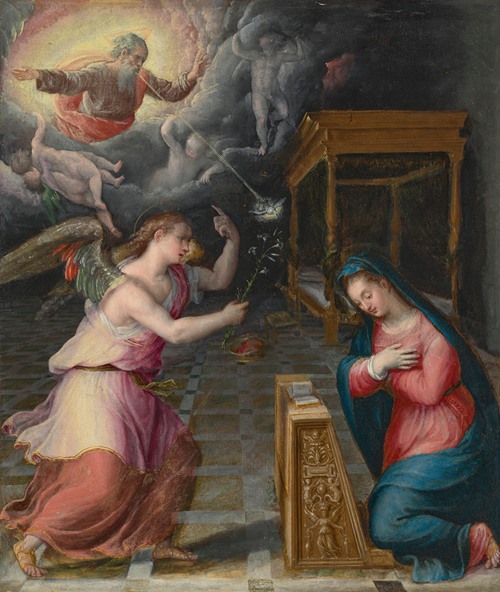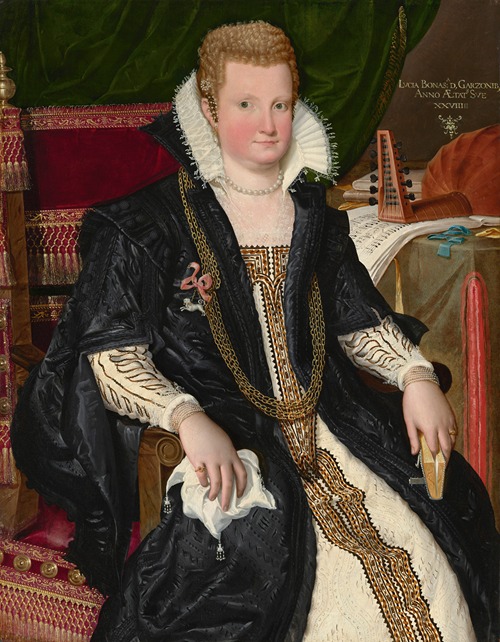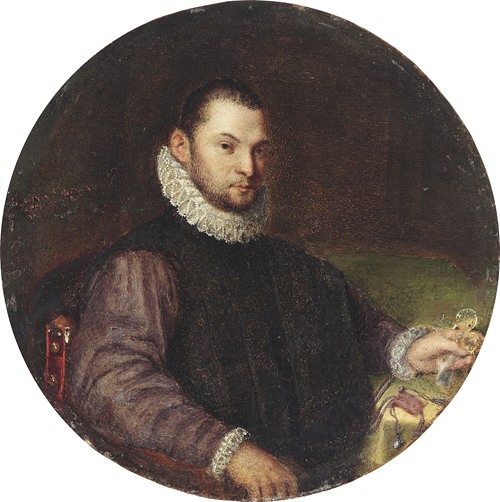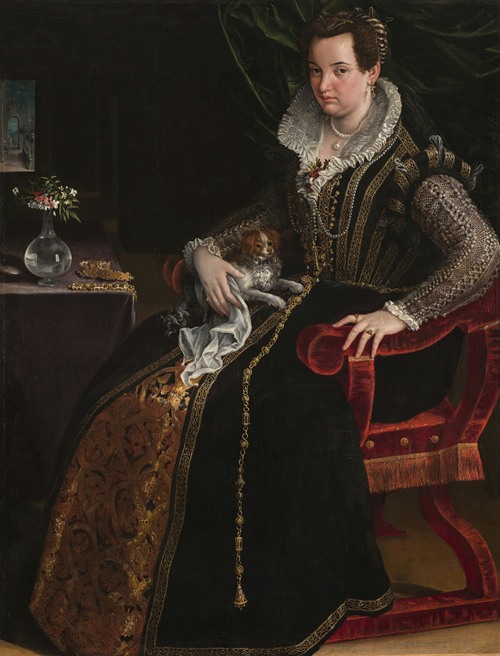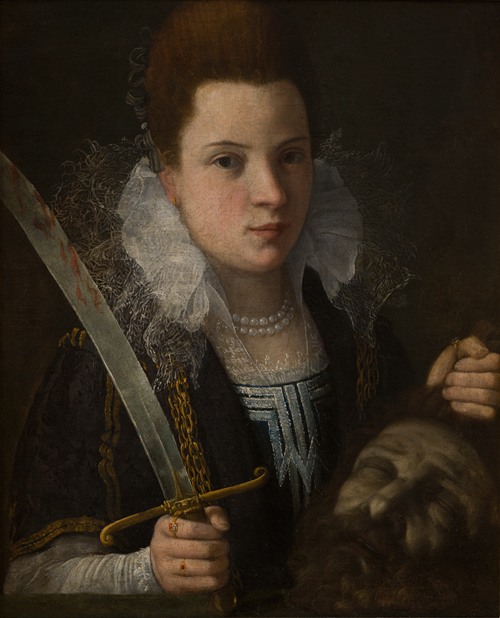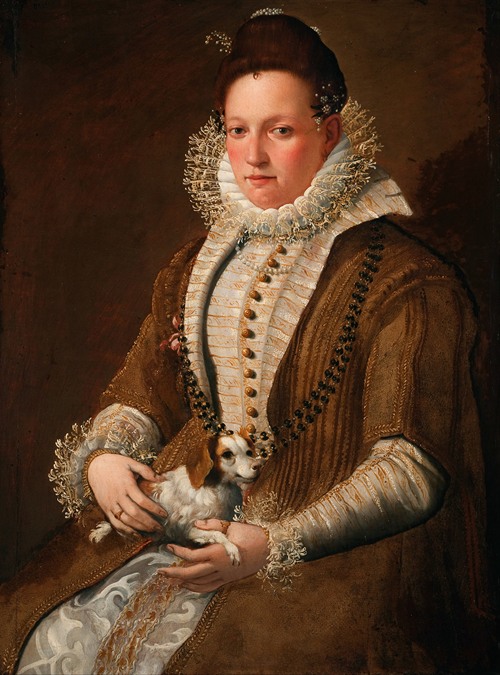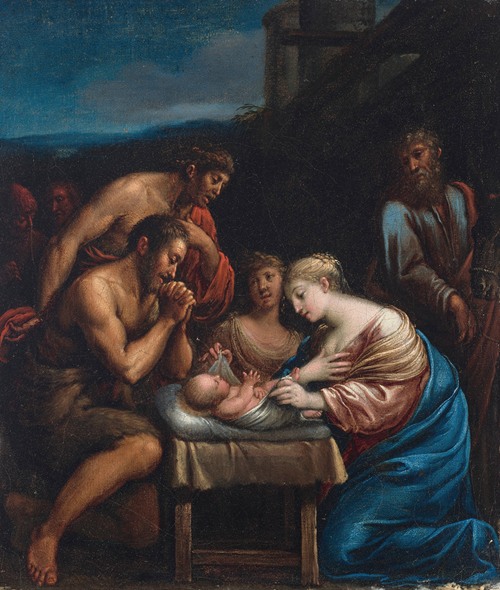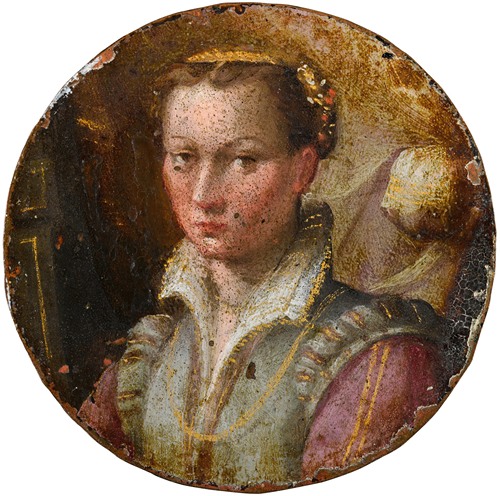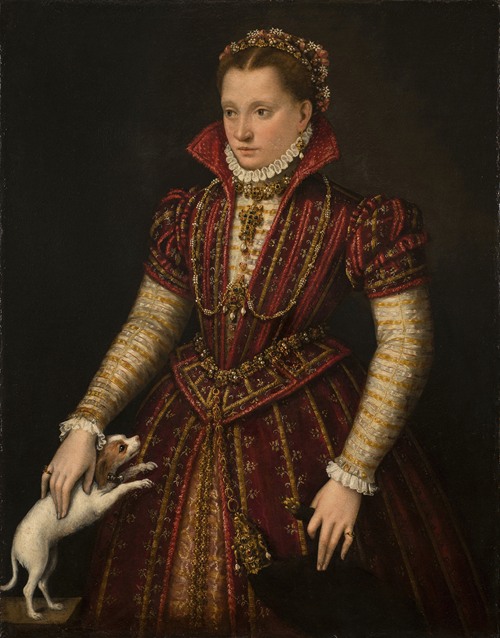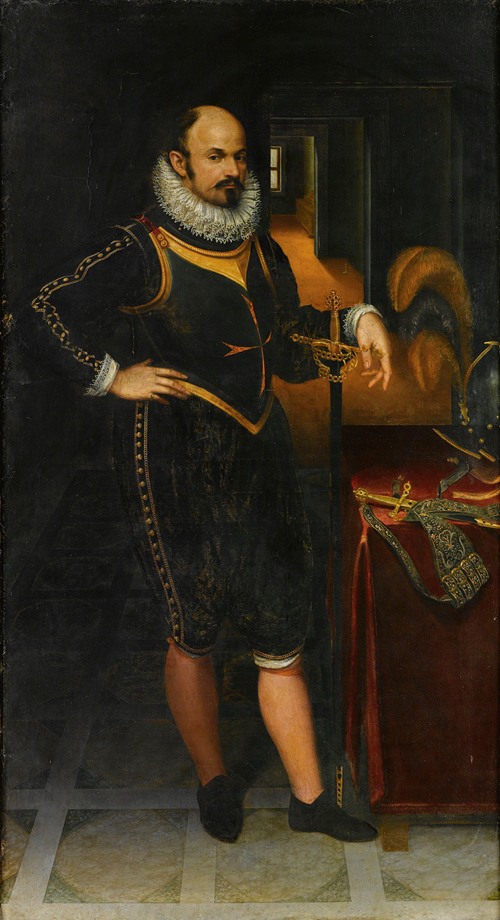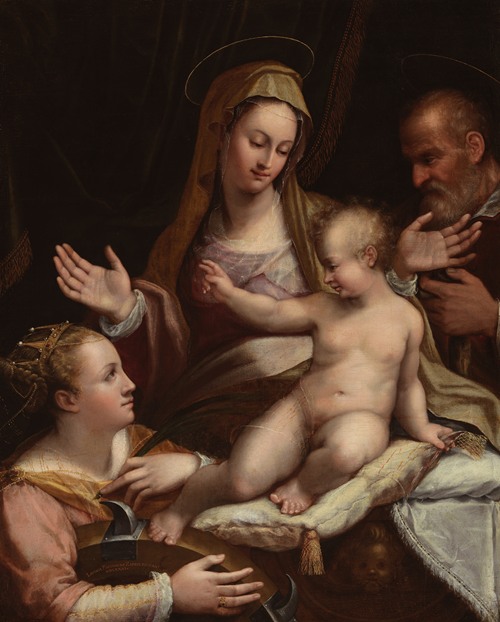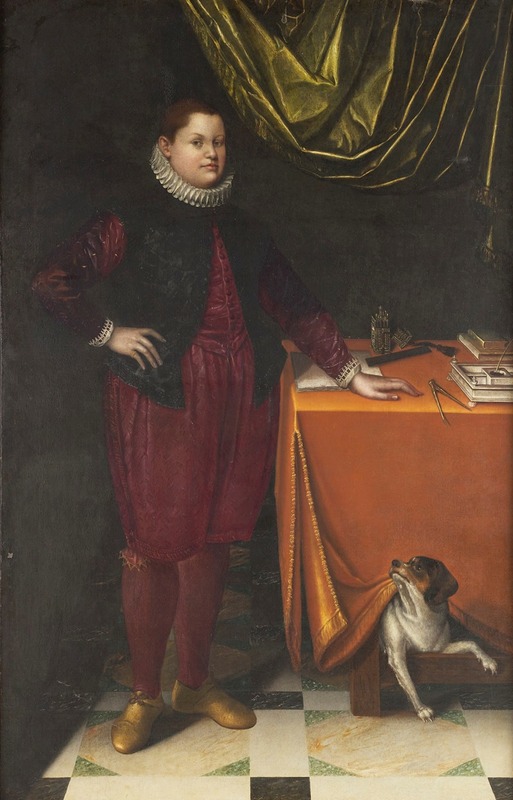

Lavinia Fontana was a Bolognese Mannerist painter active in Bologna and Rome. She is best known for her successful portraiture, but also worked in the genres of mythology and religious painting. She was trained by her father Prospero Fontana who was a teacher at the School of Bologna. She is regarded as the first female career artist in Western Europe as she relied on commissions for her income. Her family relied on her career as a painter, and her husband served as her agent and raised their eleven children. She was perhaps the first woman artist to paint female nudes, but this is a topic of controversy among art historians.
Lavinia Fontana was born in Bologna in 1552 to Prospero Fontana and Antonia de' Bonardis. She was baptized on August 24, 1552 at the cathedral of San Pietro. Her elder sister Emilia died in 1568 when Lavinia was sixteen. Prospero was a prominent painter of the School of Bologna at the time and served as her teacher. Caroline P. Murphy suspects that financial issues may have prompted Prospero to train Lavinia as a painter. Being born the daughter of painter Prospero Fontana allowed her to become a female artist in a time where female artists were not widely accepted. Fontana married Gian Paolo Zappi. Instead of offering a dowery as would have been widely accepted in this time Fontana painted to earn an income.
Her earliest known work, Child of the Monkey, was painted in 1575 at the age of 23. Though this work is now lost, another early painting, Christ with the Symbols of the Passion, painted in 1576, is now in the El Paso Museum of Art. Bolognese society at large was supportive of Fontana's artistic career, providing opportunities and connections that were not available to women in other locales. She began her commercial practice by painting small devotional paintings on copper, which had popular appeal as papal and diplomatic gifts, given the value and lustre of the metal. In the 1580s, she was known as a portraitist of Bolognese noblewomen who competed for her services. The high demand for portraits painted by Fontana was reflected in the large sums of money she earned during this period. Her relationships with female clients were often unusually warm; multiple women who sat for portraits, such as the Duchess of Sora Constanza Sforza Boncompagni, later served as namesakes or godmothers for Fontana's children. In addition to portraits, she later created large-scale paintings with religious and mythological themes which sometimes included female nudes. Fontana married Gian Paolo Zappi (alternate spellings include Giovan and Fappi) in June 1577. The couple moved into Prospero's house in Bologna and Lavinia painted professionally, adding Zappi to her signature. She gave birth to 11 children, though only 3 outlived her: Flaminio, Orazio, and Prospero. Zappi took care of the household and served as an agent and painting assistant to his wife, including painting minor elements of paintings such as draperies. Fontana attended classes at the University of Bologna, and was listed as one of the city's 'Donne addtrinatte' (women with doctorates) in 1580.
Fontana and her family moved to Rome in 1603 at the invitation of Pope Clement VIII. She gained the patronage of the Buoncompagni, of which Pope Gregory XIII was a member. She was subsequently appointed as Portraitist in Ordinary at the Vatican. Lavinia thrived in Rome as she had in Bologna and Pope Paul V himself was among her sitters. She was the recipient of numerous honors, including a bronze portrait medallion cast in 1611 by sculptor and architect Felice Antonio Casoni. According to Jean Owens Schaefer, the reverse side of the medal depicts Pittura, an allegorical figure representing painting. He also posits that this is the first visual rendition of Cesare Ripa's 1603 description of Pittura.
She was elected into the Accademia di San Luca of Rome. She died in the city of Rome on August 11, 1614 and was subsequently buried at Santa Maria sopra Minerva.

